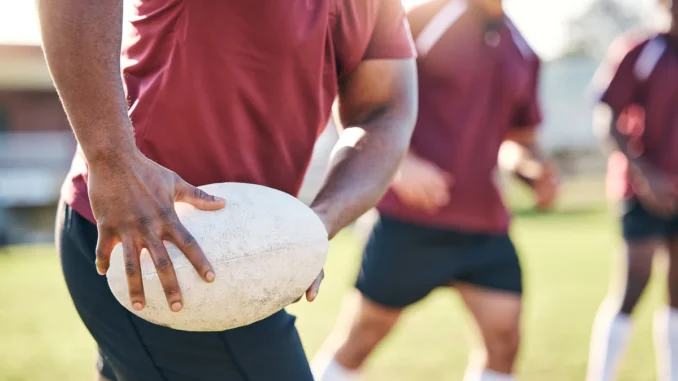
Introduction
Rugby Union is one of the most physically demanding sports in the world. Players require a combination of strength, speed, endurance, and mental toughness to perform at the highest level. Training for peak performance in Rugby Union is a multifaceted process that focuses on physical conditioning, skill development, tactical understanding, and mental resilience. In this post, we will explore how rugby players are trained to reach their full potential on the field.
1. The Importance of Physical Conditioning
Rugby Union players need to be in top physical shape to compete at the highest level. Training programs emphasize developing strength, speed, agility, and endurance.
Strength and Power
- Weight Training: Players engage in regular strength training, focusing on building power in key muscle groups. Squats, deadlifts, and bench presses help build lower and upper body strength.
- Functional Movements: Rugby players often perform functional exercises that simulate the demands of the game. These include exercises that target explosive power, such as cleans and plyometric drills.
Speed and Agility
- Sprint Training: Players undergo sprint drills to improve their acceleration and maximum speed. These drills typically involve short bursts of high-intensity sprints over varying distances.
- Agility Drills: Cone drills, ladder drills, and shuttle runs improve players’ ability to change direction quickly and efficiently while maintaining control of the ball.
Endurance
- Aerobic Conditioning: Long-distance runs, cycling, or swimming help develop aerobic endurance, which is essential for maintaining performance throughout a match.
- Interval Training: To mimic the stop-start nature of rugby, interval training is used to improve anaerobic endurance, enabling players to recover quickly between high-intensity efforts.
2. Skill Development and Technical Training
A rugby player’s technical skills are just as important as their physical conditioning. From passing to tackling, each skill must be honed to perfection.
Passing and Handling
- Ball Skills: Players practice handling the ball under pressure. Drills include passing, catching, and offloading the ball, with a focus on accuracy and speed.
- Two-Handed Passing: Players are taught to pass the ball effectively using both hands, allowing them to switch directions and deliver the ball quickly to teammates.
Tackling and Defense
- Tackle Technique: Proper tackling technique is crucial to prevent injury and make effective tackles. Players practice tackling through drills that emphasize body positioning, contact points, and safe technique.
- Defensive Positioning: Players work on defensive positioning and reading the opposition’s movements to anticipate attacking plays.
Kicking Skills
- Place Kicking: Kickers spend time practicing place kicks for goal attempts, focusing on accuracy, power, and consistency.
- Punt and Drop Kicks: Kicking drills also include punting and drop-kicking, crucial for clearing the ball and tactical play.
3. Tactical and Game Understanding
Rugby Union players need more than physical skills—they must understand the tactical aspects of the game. Coaches help players develop strategic thinking and decision-making skills.
Game Analysis and Strategy
- Studying Opponents: Players review video footage of past matches to analyze opponents’ strategies, strengths, and weaknesses. Understanding the opposition’s play patterns helps players make better decisions during games.
- Set Pieces: Players learn how to execute set pieces, including scrums, lineouts, and kick-offs. These are critical moments in the game, and players must understand how to use them to their advantage.
Game Management
- Reading the Game: Players develop the ability to read the flow of the game, recognizing when to attack, defend, or manage possession. This helps them make quick, tactical decisions during matches.
- Communication: Clear communication is essential on the field. Players are trained to work together and communicate their intentions to maintain team structure and coordination.
4. Mental Resilience and Psychological Training
Rugby Union is not just about physical strength—it also requires mental toughness. Players must remain focused, composed, and resilient, even under pressure.
Focus and Concentration
- Mindfulness Techniques: Players use mindfulness exercises, such as meditation and breathing techniques, to enhance focus and manage stress.
- Visualization: Visualization is a powerful tool in rugby training. Players imagine themselves successfully completing actions on the field, helping build confidence and reduce anxiety.
Resilience and Motivation
- Goal Setting: Setting short- and long-term goals helps players stay motivated and track their progress. This includes individual performance targets as well as team objectives.
- Mental Toughness: Through mental conditioning exercises, players develop the resilience to push through physical fatigue, deal with setbacks, and stay positive even during challenging moments.
5. Recovery and Injury Prevention
Rugby Union is a physically demanding sport that comes with a high risk of injury. Proper recovery is essential for keeping players in top form and preventing long-term injuries.
Rest and Recovery
- Sleep: Sleep is a crucial aspect of recovery. Players are encouraged to get adequate rest to allow their muscles to repair and regenerate.
- Active Recovery: Low-intensity activities, such as light swimming or yoga, help promote blood flow and aid muscle recovery.
Injury Prevention
- Warm-Up and Cool-Down: Proper warm-up routines help prevent injuries, while cool-downs help the body return to a resting state. These include stretching, foam rolling, and mobility exercises.
- Physiotherapy: Regular physiotherapy sessions help detect and treat potential injuries before they become more serious, and help players recover from any existing injuries.
6. Nutrition for Peak Performance
Proper nutrition is crucial for rugby players to perform at their best. A balanced diet helps fuel workouts, supports recovery, and improves overall health.
Macronutrients
- Carbohydrates: Rugby players rely on carbohydrates to fuel high-intensity training and match performance. Foods like pasta, rice, and fruits are essential sources of energy.
- Proteins: Protein is essential for muscle repair and recovery. Lean meats, fish, eggs, and plant-based proteins support muscle growth and maintenance.
- Fats: Healthy fats, such as those found in nuts, avocados, and olive oil, provide sustained energy and support joint health.
Hydration
- Water: Staying hydrated is crucial for maintaining energy levels and preventing cramping. Players drink water throughout the day, particularly before, during, and after training.
- Electrolyte Drinks: In intense training sessions or matches, players often consume drinks containing electrolytes to replenish lost minerals.
Conclusion
Training for peak performance in Rugby Union is a holistic process that involves physical conditioning, skill development, tactical understanding, mental resilience, and proper nutrition. Rugby players dedicate themselves to a well-rounded training program that prepares them for the demands of the game. By following a rigorous training routine, players develop the strength, speed, endurance, and tactical intelligence necessary to succeed at the highest level.



Leave a Reply